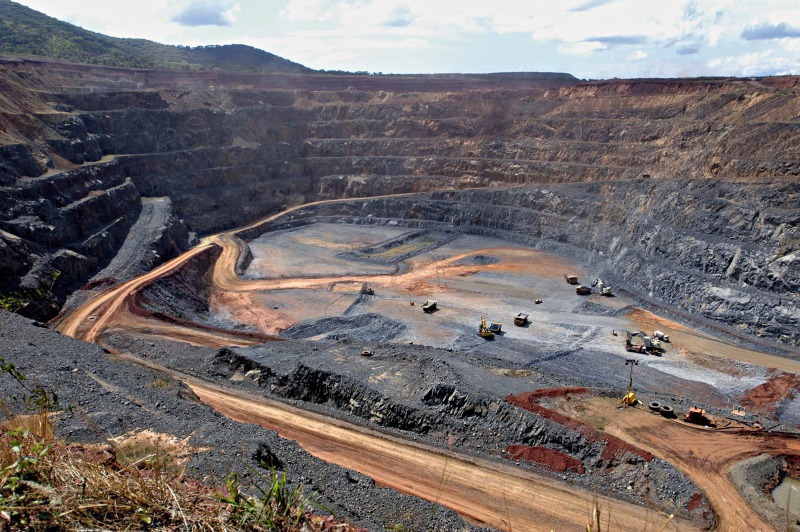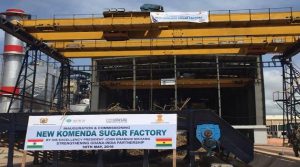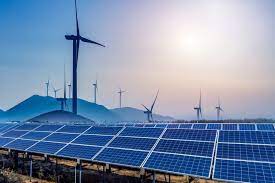Total mining output (not seasonally adjusted) unexpectedly grew by 0.8% year-on-year in February after having contracted sharply by a downwardly revised 8.4% year-on-year in January.
Nongold mining production grew by 2.4% year-on-year following a contraction of 7.8% year-on-year in January, meaning that the outturn for overall mining production growth was better than Bloomberg consensus expectations for a contraction of 3% year-on-year.
Seasonally adjusted mining output, which aligns with the official calculation of quarterly real gross domestic product (GDP) growth, increased by 3.8% month-on-month following downwardly revised growth of 3.9% month-on-month in January.
First National Bank (FNB) economist Thanda Sithole says the overall mining production data is encouraging and suggests that the mining sector contributed positively to real GDP growth in the first quarter of the year.
Mining export values grew by 5.6% month-on-month in February to R53.5-billion and were up by 33.6% in February 2021 relative to February 2020, suggesting that external conditions are favourable, with a global economic growth recovery under way since the second half of 2020.
OUTLOOK
FNB says it still expects mining activity to be supported by sustained higher commodity prices from last year and the anticipated robust economic growth rebound, mainly from South Africa’s major trading partners.
The International Monetary Fund (IMF) also recently lifted its 2021 global growth forecast by 0.5 of a percentage point to 6% relative to January’s World Economic Outlook.
Global growth, meanwhile, is expected to remain reasonably strong at 4.4% in 2022.
FNB, however, therefore, cautions that the slow roll-out of vaccines (versus the possibility of a third wave of infections) and persistent electricity supply disruptions could limit production growth even as the global economy recovers.
SUBSECTOR’S PERFORMANCE
Growth in total mining production was led by the production of iron-ore, which grew strongly by 65.7% year-on-year in February after having contracted by 24.8% on average over the past twelve months.
This was followed by manganese ore production, which increased by 21.6% year-on-year from already strong growth of 23.6% and 35.7% in January 2021 and December 2020, respectively and other nonmetallic minerals production, which posted growth of 12.6% year-on-year in February after contracting by 13.5% year-on-year per month over the past twelve months.
Negatively, coal production (25% of total mining production) declined by 19.3% relative to February 2020, shaving off 5.7 percentage points from total mining production growth. This was followed by gold production (weight: 16.81%), which declined by 8.7% relative to February 2020, shaving off 1.2 percentage points and the production of platinum group metals (PGMs, weight: 22.43%) which declined by 0.8% relative to February 2020.
Mining production grew by 0.8% year-on-year in February, the first yearly growth since February last year, from a downwardly revised 8.4% (previously 6.2%) contraction a month earlier.
Iron-ore rose for the first time since January 2020 and contributed the most to the increase, rising by 65.7% and adding 5.9 percentage points to the total.
Manganese ore and other nonmetallic minerals also made notable positive contributions. By contrast, coal and gold production volumes declined significantly (shaving a combined 6.9 percentage points from the overall index), reflecting the shift in trading patterns amid developments of the Covid-19 pandemic.
Lower coal production is most likely owing to India’s weaker demand owing to the slowdown in activity, whereas a generally more optimistic global sentiment reduced demand for gold as a safe-haven asset.
Mining volumes increased by a seasonally adjusted 3.8% month-on-month in February from a downwardly revised 3.9% (previously 4.5%) in January, following the preceding four months of declines. The most prominent growth stemmed from iron-ore and manganese ore output.
Production was flat between the three months to February and the previous three months. The significant positive contribution by iron-ore was largely offset by declines in manganese ore and coal volumes.
Mineral sales remained robust, up 26% year-on-year from 25.4% growth in January. Sales continued to benefit from increased global demand, higher commodity prices and improved operations at major ports.
The main contributor was PGMs (47%) and manganese ore (39.7%), which contributed a combined nine percentage points.
By contrast, the value of coal sales fell for the fifth successive month, down 11% year-on-month. For the three months to February, mineral sales increased by 7% compared to the previous three months.
The overall improvement in mining production volumes is encouraging. Considering base-effect in March, the sector will probably contribute positively to the first-quarter GDP.
Looking ahead, the sector faces counter-balancing factors. On the international front, improving industrial activity and firmer commodity prices will support higher production.
Domestically, however, an uncertain legislative framework and unreliable power supply pose significant downside risks. Furthermore, further waves of Covid-19 infections and the associated restrictions on economic activity remain a threat to the pace of recovery. Total mining output (not seasonally adjusted) unexpectedly grew by 0.8% year-on-year in February after having contracted sharply by a downwardly revised 8.4% year-on-year in January.
Nongold mining production grew by 2.4% year-on-year following a contraction of 7.8% year-on-year in January, meaning that the outturn for overall mining production growth was better than Bloomberg consensus expectations for a contraction of 3% year-on-year.
Seasonally adjusted mining output, which aligns with the official calculation of quarterly real gross domestic product (GDP) growth, increased by 3.8% month-on-month following downwardly revised growth of 3.9% month-on-month in January.
First National Bank (FNB) economist Thanda Sithole says the overall mining production data is encouraging and suggests that the mining sector contributed positively to real GDP growth in the first quarter of the year.
Mining export values grew by 5.6% month-on-month in February to R53.5-billion and were up by 33.6% in February 2021 relative to February 2020, suggesting that external conditions are favourable, with a global economic growth recovery under way since the second half of 2020.
OUTLOOK
FNB says it still expects mining activity to be supported by sustained higher commodity prices from last year and the anticipated robust economic growth rebound, mainly from South Africa’s major trading partners.
The International Monetary Fund (IMF) also recently lifted its 2021 global growth forecast by 0.5 of a percentage point to 6% relative to January’s World Economic Outlook.
Global growth, meanwhile, is expected to remain reasonably strong at 4.4% in 2022.
FNB, however, therefore, cautions that the slow roll-out of vaccines (versus the possibility of a third wave of infections) and persistent electricity supply disruptions could limit production growth even as the global economy recovers.
SUBSECTOR’S PERFORMANCE
Growth in total mining production was led by the production of iron-ore, which grew strongly by 65.7% year-on-year in February after having contracted by 24.8% on average over the past twelve months.
This was followed by manganese ore production, which increased by 21.6% year-on-year from already strong growth of 23.6% and 35.7% in January 2021 and December 2020, respectively and other nonmetallic minerals production, which posted growth of 12.6% year-on-year in February after contracting by 13.5% year-on-year per month over the past twelve months.
Negatively, coal production (25% of total mining production) declined by 19.3% relative to February 2020, shaving off 5.7 percentage points from total mining production growth. This was followed by gold production (weight: 16.81%), which declined by 8.7% relative to February 2020, shaving off 1.2 percentage points and the production of platinum group metals (PGMs, weight: 22.43%) which declined by 0.8% relative to February 2020.
Mining production grew by 0.8% year-on-year in February, the first yearly growth since February last year, from a downwardly revised 8.4% (previously 6.2%) contraction a month earlier.
Iron-ore rose for the first time since January 2020 and contributed the most to the increase, rising by 65.7% and adding 5.9 percentage points to the total.
Manganese ore and other nonmetallic minerals also made notable positive contributions. By contrast, coal and gold production volumes declined significantly (shaving a combined 6.9 percentage points from the overall index), reflecting the shift in trading patterns amid developments of the Covid-19 pandemic.
Lower coal production is most likely owing to India’s weaker demand owing to the slowdown in activity, whereas a generally more optimistic global sentiment reduced demand for gold as a safe-haven asset.
Mining volumes increased by a seasonally adjusted 3.8% month-on-month in February from a downwardly revised 3.9% (previously 4.5%) in January, following the preceding four months of declines. The most prominent growth stemmed from iron-ore and manganese ore output.
Production was flat between the three months to February and the previous three months. The significant positive contribution by iron-ore was largely offset by declines in manganese ore and coal volumes.
Mineral sales remained robust, up 26% year-on-year from 25.4% growth in January. Sales continued to benefit from increased global demand, higher commodity prices and improved operations at major ports.
The main contributor was PGMs (47%) and manganese ore (39.7%), which contributed a combined nine percentage points.
By contrast, the value of coal sales fell for the fifth successive month, down 11% year-on-month. For the three months to February, mineral sales increased by 7% compared to the previous three months.
The overall improvement in mining production volumes is encouraging. Considering base-effect in March, the sector will probably contribute positively to the first-quarter GDP.
Looking ahead, the sector faces counter-balancing factors. On the international front, improving industrial activity and firmer commodity prices will support higher production.
Domestically, however, an uncertain legislative framework and unreliable power supply pose significant downside risks. Furthermore, further waves of Covid-19 infections and the associated restrictions on economic activity remain a threat to the pace of recovery.






